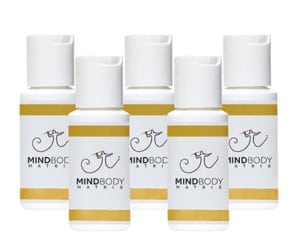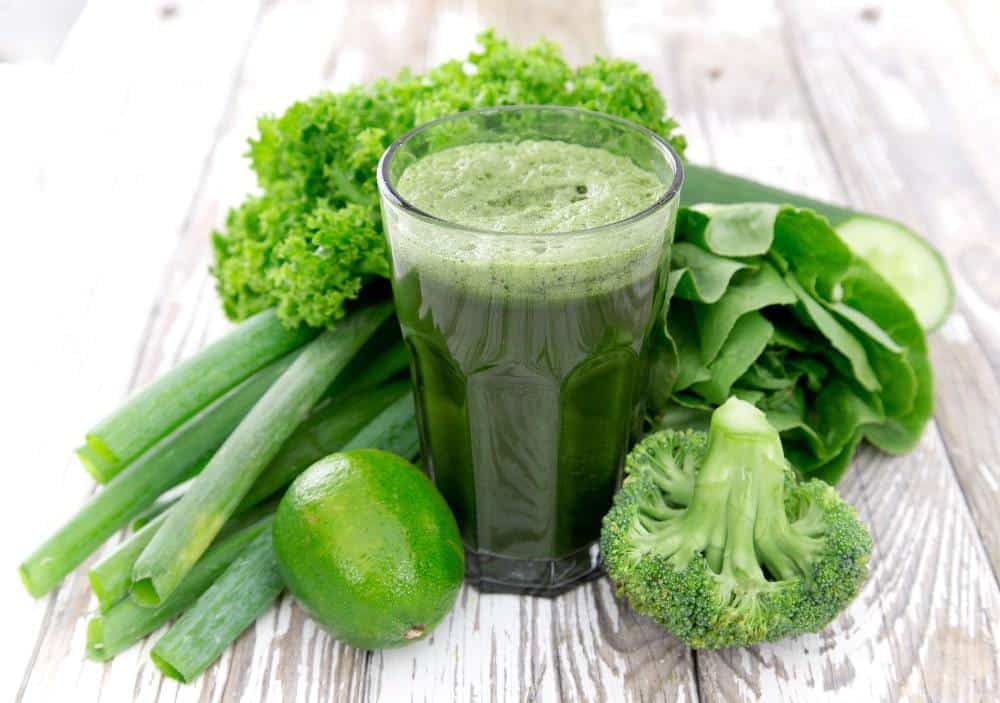
Not everyone is familiar with juicing. Some people believe they can get the same nutrients and health benefits from store-bought bottles.
Others think juicing is too expensive and time-consuming. It may surprise you to learn that juicing at home can be quick and easy, it also doesn’t cost a lot of money.
If you’re new to juicing, here’s everything you need to know.
What Is Juicing?
Juicing is a simple procedure, especially if you have a dedicated machine. The process involves extracting the juice from vegetables and fruits.
You can mix vegetable and fruit together to obtain juice from these or have a one ingredient juice.
There is no right or wrong way to mix the various fruit and vegetable juices. All the matters, is you love the taste and the health benefits that come from juicing particular ingredients.
To get the health benefits, you want to juice every day.
What Are the Benefits of Juicing Once A Day
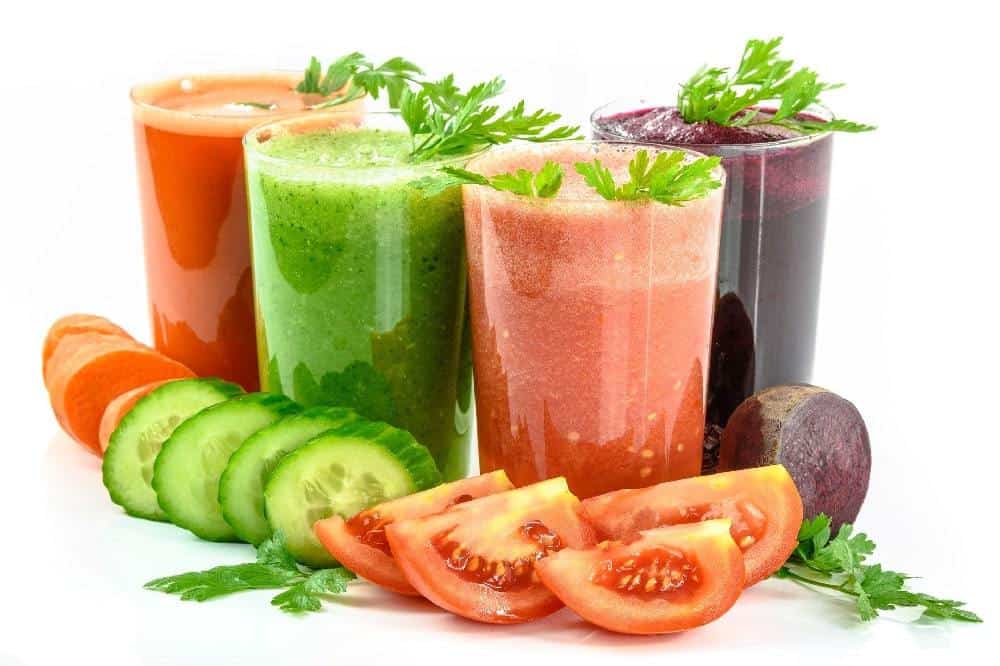
Juicing for beginners starts with learning the health benefits. If you don’t know what they are, you’re less likely to keep up with the daily habit.
Let’s take a look at pros and cons of juicing.
Juicing pros include:
- It’s hard eating enough fruits and vegetables to get your recommended daily allowance of vitamins and minerals. Juicing is an effective way to get the nutrients without feeling like you’re overeating. Your body absorbs more of the nutrients in vegetables. Juicing protects the heat-sensitive nutrients you lose during cooking. Heat changes the chemical composition of micronutrients in natural and processed foods. This is why juicing raw vegetables in particular is such a powerful and easy way of supplying your body with the highest quality nutrients quickly.
- Juicing saves your body energy it can use to speed up the healing process. The juicer extracts the nutrients, so your body doesn’t have to expend its energy to break down all the food itself.
- You can boost the nutritional value of your juice by adding natural alkaline supplements like wheatgrass, chlorella, spirulina or hemp seeds, along with spices like ginger and turmeric. Adding fresh garlic is another way you can add more nutritional value to your juice. It’s an effective way to boost your immune system during cold and flu season.
- Juicing may help treat symptoms associated with some diseases and health conditions. Citrus fruits contain Vitamin C, which has antioxidant properties. You can boost your immune system and prevent illnesses like the flu and colds. Daily juicing may also help relieve inflammation and boost heart health. Juicing releases phytochemicals the body uses to dissolve free radicals that cause inflammation and certain types of cancers.
- Most diets are high in acid-forming foods. Sugar, red meat, white flour, coffee, and alcohol are foods people eat daily. A diet high in these foods can cause your blood to become more acidic. Your body starts to struggle with normal functions like digestion. You may also feel tired and lack the energy needed to accomplish daily tasks. Juicing, using vegetables, helps increase your consumption of alkaline-rich foods. You have more energy and feel healthier.
- Did you know juicing can help your skin look and feel better? The natural antioxidants in fruits and vegetables can help flush impurities from your body. Fruits like apples contain peptides that are beneficial for your skin, nails, and hair. Daily juicing helps your body detox from the impurities you absorb during the day.
- Mornings are tough for most people and their daily cup of coffee doesn’t give them the energy they need. Juicing takes care of it pretty well. A glass of fresh fruit and vegetable juice gives you the energy you need to tackle early mornings. Your body gets a blast of vitamins, minerals, and phytonutrients. You also get the necessary nutrients to stay hydrated and healthy.
- Juicing may help you lose some weight, but this is an added benefit you get with healthy living.
What Are the Cons of Juicing?
Juicing can also have a few downsides:
- Sugar is a concern. Fruits and vegetables are packed with nutrients but some have a higher sugar content than others. When you only juice foods with high sugar contents, you’re not getting all of the benefits. It’s not only fruits like oranges that are high in natural sugar, but also vegetables like beetroot and carrots. When juicing for health, try to use hard, green veggies. Celery and cucumber are two examples of low-sugar veggies. If you want a sweeter tasting juice, add a few small pieces of fruit. Try a ratio of 3 vegetables to one fruit. It keeps the sugar down and still tastes sweet enough.
- Juicing reduces or eliminates the fiber in fruits and vegetables. You get the nutrients, without the benefit of fiber.
- Juicing machines are not cheap. However, if the price of a juicer is turning you off, remember it’s a one-time purchase. A quality juicer will last for years and pay for itself over time. In the long run, it’s cheaper than buying your juice at a whole foods store. You also know exactly what’s in every glass of juice you drink at home.
How to Choose the Right Juicer
Juicing for beginners starts with the right machine. There is more than one type of juicer, and the right machine depends on the foods you plan on juicing.
Centrifugal Juicers
These juices use spinning blades to separate the juice from the produce. The pulp and liquid are separated into individual containers. Centrifugal juicers are fast, but they are also noisy.
Most centrifugal models come with two speeds. One for soft foods, and the other for harder ones.
The downside to these juicers, along with the noise, is they don’t work well with leafy greens. It’s difficult for the rotating blades to extract the juice.
You can buy Centrifugal Juicers online.
Masticating Juicers
You may find masticating juicers listed as Slow Juicers or Cold Press juicers. Masticating juicers work by pressing and crushing the ingredients to remove the juice with a rotating screw (auger).
These juicers are more quiet due to the slow turning auger. The machine is also able to remove more nutrients from your ingredients than a centrifugal juicer and therefore providing you with a healthier glass of juice.
Masticating juices come in three types:
- Vertical Juicers
- Horizontal Juicers
- Twin-Gear Juicers
All three types of masticating juicers extract most of the nutrients from your ingredients. The difference is in the speed and position of the juicer. Vertical juicers are faster than horizontal models.
Twin-gear juicers come with gears, along with a rotating auger, that cuts, crushes, and squeezes the fruit at the same time.
You get almost all of the nutrients in your ingredients with little waste left behind.
I personally use only masticating juicers as they indeed extract the most nutrients from my ingredients and are best suited for those who treat juicing as part of their healthy living routine.
They are perfect for juicing most vegetable and fruit including leafy greens and wheatgrass.
Whether you’re new to juicing or already a pro, masticating juicers, in my opinion, offer the best of both worlds: they’re easy to use and extract quality juice from your ingredients, and for that reason I highly recommend them.
Currently I use Omega juicer. I’ve had it since 2014 and I absolutely love it (and therefore can recommend it to any serious juice lover 🙂 ) ! It’s a great quality juicer and provides a great quality juice.
After so many years of use I never had to request for a replacement of a single juicer part.
And the fact that the juicer comes with 15 years free broken parts replacement is comforting to know and at the same time speaks volume of its quality.
You can buy Masticating Juicers online.
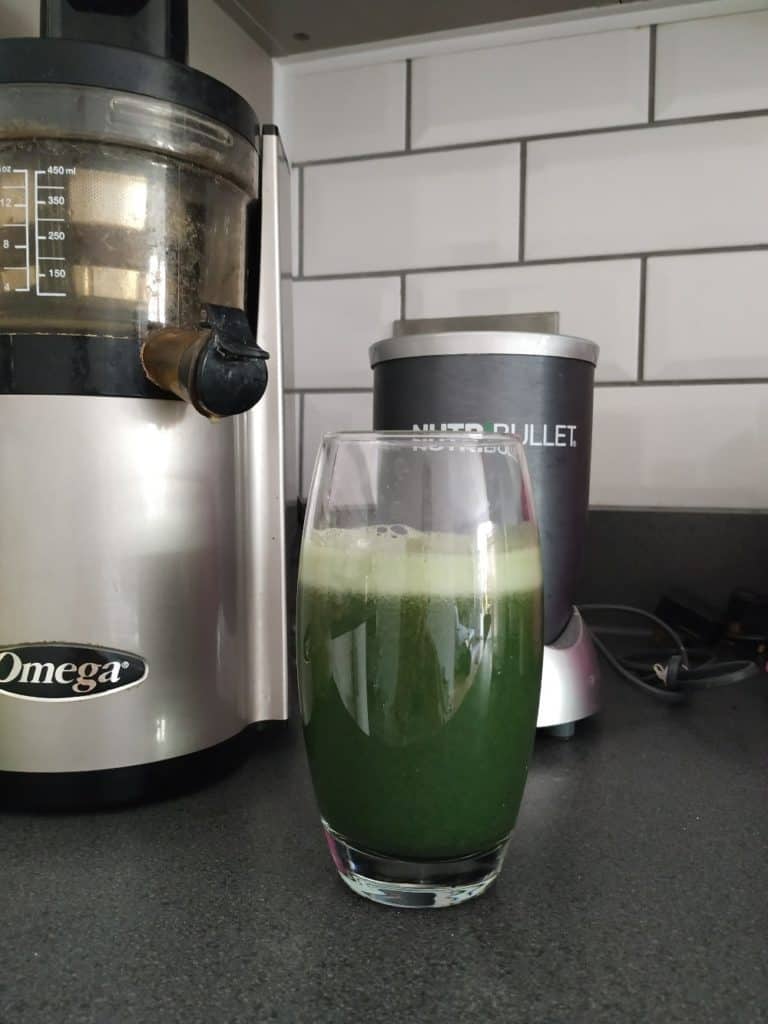
Is Cleaning a Juicer a Chore?
Cleaning a juicer is easier than you think, regardless of the type. A tip to remember, don’t let the juicer sit for hours before cleaning it.
The sticky residue will harden and dry and will be more difficult to clean. It’s a mistake you’ll only make once.
I personally have used 2 models of masticating juicers and find them fairly quick and easy to clean.
Once the juicing is done, I quickly remove all the parts (literally 4-5 of them) and rinse them under the running water (there’s only one part that requires a quick brush with the brush provided).
Then I put all parts onto the dryer and that’s it. It’s max 5 min of my time from start to finish.
Once you’ll make it your daily habit, you’ll hardly notice doing it at all. Is it worth it, you may ask?
Just as much as drinking the highly nutritious juice for optimum health benefits-it is well worth it for me!
Juicing On A Budget: How To Juice Without A Juicer
When you’re starting out, you may not own a juicer or have the funds to purchase one. You can still get the benefits of juicing with a little manual labor.
You most likely will have a regular blender already that usually comes with multiple functions such as puree. Press this button, and your blender will crush most ingredients to a pulp.
To keep the pulp separate from the juice, a nut bag can work as a strainer.
It takes indeed a bit of work to use a blender for juicing on daily basis.
First you need to chop your ingredients, then blend them together and in the end, strain the created pulp through a nut bag, squeezing as much juice out of it as you can.
A blender works fine as a temporary solution especially when you’re just testing the waters and exploring the benefits of juicing. However, if you’re serious about juicing, you need a dedicated machine.
You can get a blender and nut bag on Amazon.
Juicing Grocery List
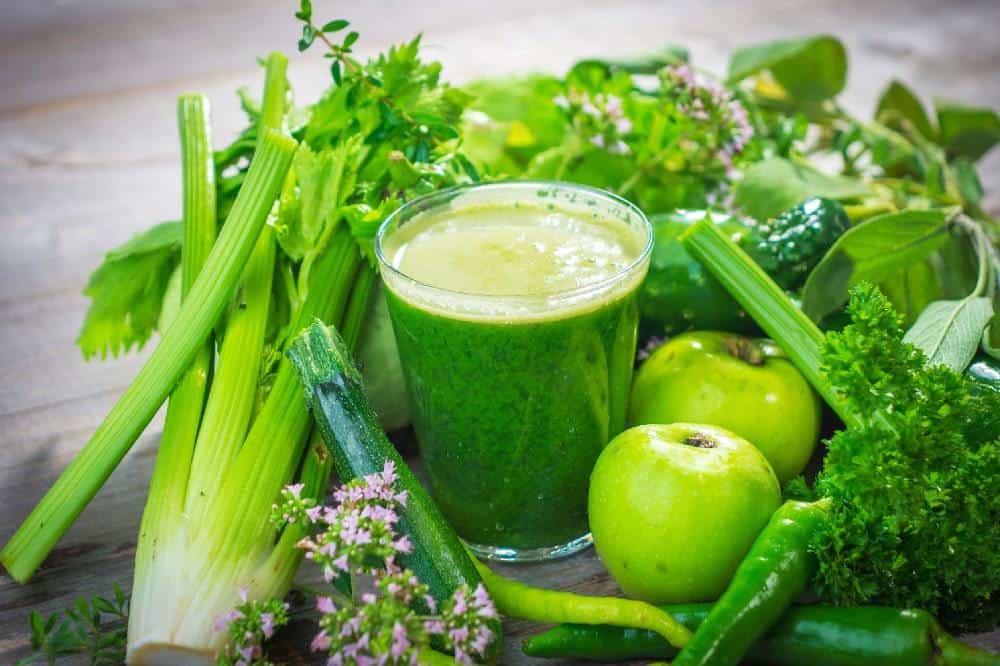
Before heading to the grocery store to stock up on fruits and veggies, make a checklist. It’s easy to go overboard and bring home more than you can use.
You also don’t want to concentrate only on the fruits and veggies you know and love – experiment with different foods and supplements.
Add some chia seeds for texture to your leafy green juice, if you like. Not only do you get a nutty flavor, but the added health benefits. The seeds can help reduce inflammation.
Don’t be afraid to try new vegetables which you may have steered away from eating as a whole before that may be much more appealing in the form of a juice and benefit your health at the same time.
For me personally, before my juicing journey began, I would never go near celery stick as a veggie to eat but I absolutely love it in my juice.
And considering how many health benefits celery has, juicing is the only way for me to get all the goodies from the veggie into my body without the cringe.
Hence, take a closer look at benefits of juicing for particular veggies and consider giving them a go. Who knows, you may discover a new food you love.
Creating a grocery store checklist also helps you limit how much sugar ends up in your juice.
How To Start Juicing: Juicing For Beginners Summary
Juicing is easier than you may think. With the right juicer, you can make healthy drinks every day at home. You can decide if you want to add water, or just stick with a mix of vegetables.
My advice: if you juice watery fruit and vegetables, there is no need to add water as it will just dilute the taste of your juice.
However, it may be a good idea to add some water, if your juice is very concentrated and feels a bit ‘heavy’. Again, no right or wrong here.
At the end of the day, it’s your juice-it’s already healthy, just make it taste the way you like best.
Think about what ingredients you’ll use most often. It will determine if you want a centrifugal or masticating juicer.
Masticating models do extract more nutrients, especially when you juice foods like wheatgrass and leafy greens. If you want to juice for health, this is most definitely the type of juicer you should consider.
Plan your grocery list to match your juicer and your tastes. Go ahead and experiment with new vegetables and fruits, you may discover leafy greens are great in liquid form.
My personal favorite veggies to juice are definitely celery, cucumber and kale with a bit of apple or grapefruit for a touch of sweetness.
I tend to use 3:1 vegetable to fruit formula, ensuring I mainly juice veggies and add only enough fruit to break a bit of sweetness.
However, when you are only starting out your juicing journey, and your taste buds are not yet sugar free, don’t be too hard on yourself.
Focus first on selecting quality veggies and fruit you’d like getting health benefits from and make the juice tasty for you e.g. 50% veggies & 50% fruit (always aim at low sugar fruit e.g. apple, grapefruit, lemon, lime etc).
Over the time, experiment with the taste and aim at reducing the fruit content in favor of veggies.
And remember that your juice is best freshly made so once you make it, try to consume it straight away or within a few hours of juicing (store it in the fridge, if the latter).
Even if you don’t own a juicer, you can still get started. Just use your blender and a nut bag, and you’re ready to juice.
So what are you waiting for? Start juicing today, and start feeling healthier. And who knows, maybe you’ll discover a new healthy habit that will stick with you for life.
Related Posts:
Chlorella vs Spirulina: Which One Is Better for You?
Detox Your Body with Superfoods: 7 Superfoods for Nutritional Cleansing
Natural Sugar vs Added Sugar: Which Sugar Is Best For You?
18 Foods That Boost Immune System Naturally
How To Do Whole Foods Cleansing With Alkaline Superfoods Smoothie and Juice? (3 EASY Recipes!)
Top 5 Alkaline Supplements To Have With Your Smoothie or a Juice Everyday
What Powders To Add To Smoothies For Energy and Focus? 5 Best Natural Supplements To Try!
How to Make Green Smoothie With Nutritious Vegan Protein Powder (fast & simple)






